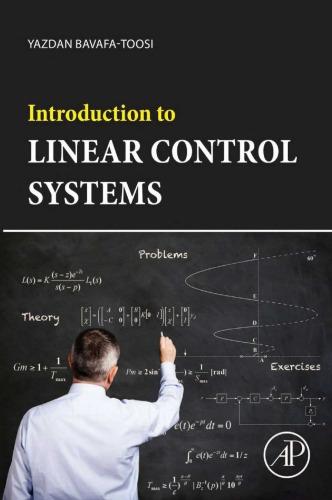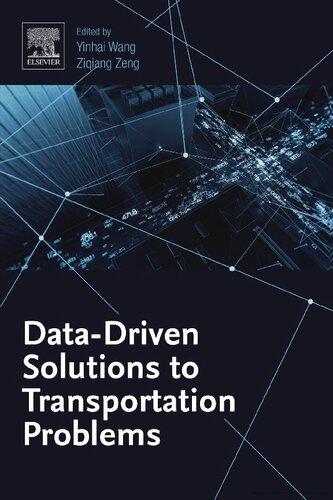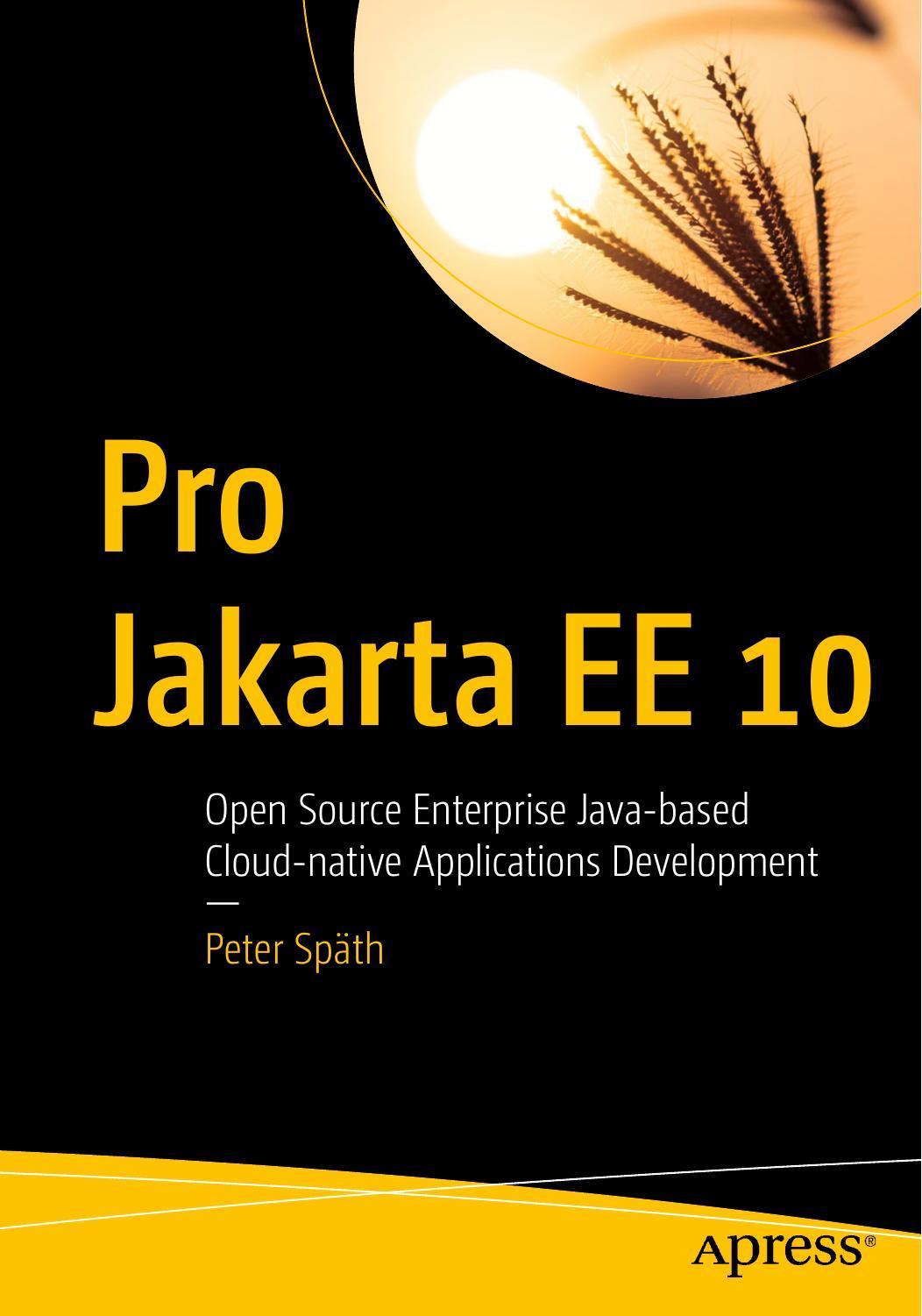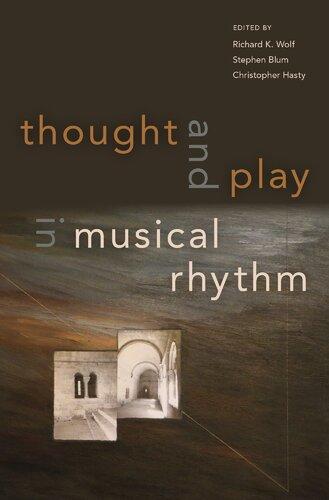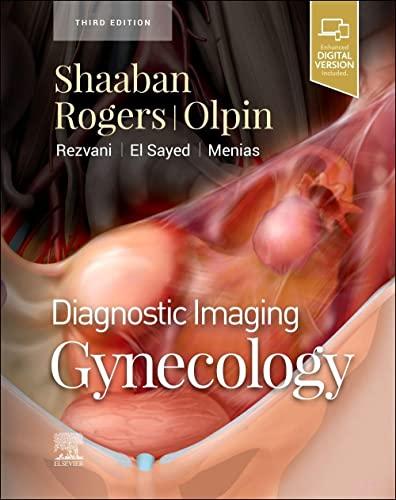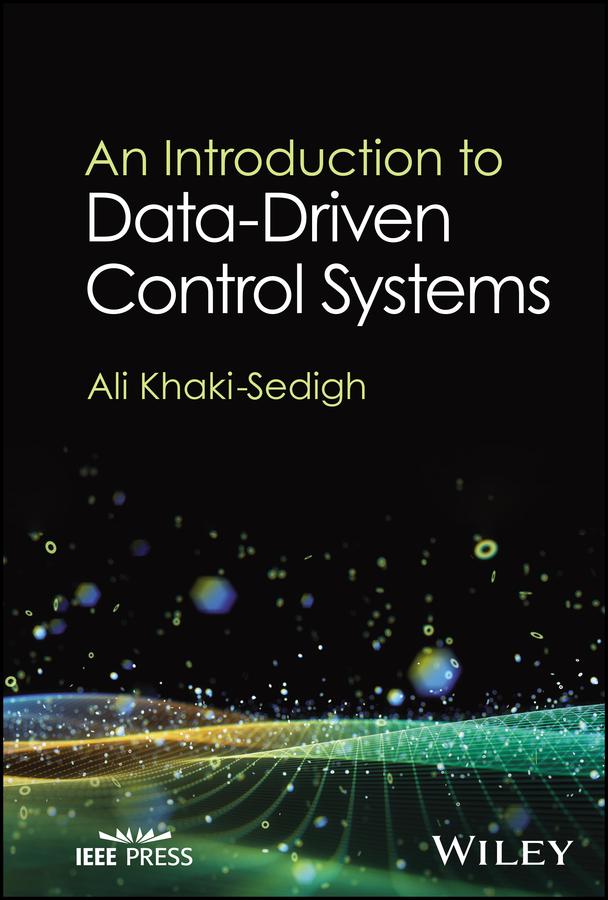Divine
Democracy: Political Theology after Carl Schmitt
Miguel Vatter
https://ebookmass.com/product/divine-democracy-political-theologyafter-carl-schmitt-miguel-vatter/
ebookmass.com
To Die in Tuscany David P. Wagner
https://ebookmass.com/product/to-die-in-tuscany-david-p-wagner-2/
ebookmass.com
Pro Jakarta EE 10: Open Source Enterprise Java-based Cloud-native Applications Development Peter Späth
https://ebookmass.com/product/pro-jakarta-ee-10-open-sourceenterprise-java-based-cloud-native-applications-development-peterspath/
ebookmass.com
Thought and Play in Musical Rhythm: Asian, African, and Euro-American Perspectives Richard Wolf
https://ebookmass.com/product/thought-and-play-in-musical-rhythmasian-african-and-euro-american-perspectives-richard-wolf/
ebookmass.com
Diagnostic Imaging: Gynecology 3rd Edition Akram M. Shaaban
https://ebookmass.com/product/diagnostic-imaging-gynecology-3rdedition-akram-m-shaaban/
ebookmass.com
Design Thinking and Innovation Metrics: Powerful Tools to Manage Creativity, OKRs, Product, and Business Success
Michael Lewrick
https://ebookmass.com/product/design-thinking-and-innovation-metricspowerful-tools-to-manage-creativity-okrs-product-and-business-successmichael-lewrick/
ebookmass.com
AnIntroductiontoData-DrivenControlSystems
IEEEPress
445HoesLane
Piscataway,NJ08854
IEEEPressEditorialBoard
SarahSpurgeon, EditorinChief
JónAtliBenediktsson
AnjanBose
JamesDuncan
AminMoeness
DesineniSubbaramNaidu
BehzadRazavi
JimLyke
HaiLi
BrianJohnson
JeffreyReed
DiomidisSpinellis
AdamDrobot
TomRobertazzi
AhmetMuratTekalp
Copyright©2024byTheInstituteofElectricalandElectronicsEngineers,Inc. Allrightsreserved.
PublishedbyJohnWiley&Sons,Inc.,Hoboken,NewJersey.
PublishedsimultaneouslyinCanada.
Nopartofthispublicationmaybereproduced,storedinaretrievalsystem,ortransmittedinany formorbyanymeans,electronic,mechanical,photocopying,recording,scanning,orotherwise, exceptaspermittedunderSection107or108ofthe1976UnitedStatesCopyrightAct,without eitherthepriorwrittenpermissionofthePublisher,orauthorizationthroughpaymentofthe appropriateper-copyfeetotheCopyrightClearanceCenter,Inc.,222RosewoodDrive,Danvers, MA01923,(978)750-8400,fax(978)750-4470,oronthewebatwww.copyright.com.Requeststo thePublisherforpermissionshouldbeaddressedtothePermissionsDepartment,JohnWiley& Sons,Inc.,111RiverStreet,Hoboken,NJ07030,(201)748-6011,fax(201)748-6008,oronlineat http://www.wiley.com/go/permission.
Trademarks:WileyandtheWileylogoaretrademarksorregisteredtrademarksofJohnWiley& Sons,Inc.and/oritsaffiliatesintheUnitedStatesandothercountriesandmaynotbeused withoutwrittenpermission.Allothertrademarksarethepropertyoftheirrespectiveowners. JohnWiley&Sons,Inc.isnotassociatedwithanyproductorvendormentionedinthisbook.
LimitofLiability/DisclaimerofWarranty:Whilethepublisherandauthorhaveusedtheirbest effortsinpreparingthisbook,theymakenorepresentationsorwarrantieswithrespecttothe accuracyorcompletenessofthecontentsofthisbookandspecificallydisclaimanyimplied warrantiesofmerchantabilityorfitnessforaparticularpurpose.Nowarrantymaybecreatedor extendedbysalesrepresentativesorwrittensalesmaterials.Theadviceandstrategiescontained hereinmaynotbesuitableforyoursituation.Youshouldconsultwithaprofessionalwhere appropriate.Neitherthepublishernorauthorshallbeliableforanylossofprofitoranyother commercialdamages,includingbutnotlimitedtospecial,incidental,consequential,orother damages.Further,readersshouldbeawarethatwebsiteslistedinthisworkmayhavechanged ordisappearedbetweenwhenthisworkwaswrittenandwhenitisread.Neitherthepublisher norauthorsshallbeliableforanylossofprofitoranyothercommercialdamages,includingbut notlimitedtospecial,incidental,consequential,orotherdamages.
Forgeneralinformationonourotherproductsandservicesorfortechnicalsupport,please contactourCustomerCareDepartmentwithintheUnitedStatesat(800)762-2974,outsidethe UnitedStatesat(317)572-3993orfax(317)572-4002.
Wileyalsopublishesitsbooksinavarietyofelectronicformats.Somecontentthatappearsin printmaynotbeavailableinelectronicformats.FormoreinformationaboutWileyproducts, visitourwebsiteatwww.wiley.com.
LibraryofCongressCataloging-in-PublicationDataAppliedfor:
HardbackISBN:9781394196401
CoverDesign:Wiley CoverImage:©zfL/GettyImages
Setin9.5/12.5ptSTIXTwoTextbyStraive,Chennai,India
2PhilosophicalPerspectivesoftheParadigmShiftinControl SystemsDesignandtheRe-EmergenceofData-Driven Control 35
2.1Introduction 35
2.2BackgroundMaterials 36
2.2.1ScientificTheory 36
2.2.2ScientificRevolutionsandParadigmShifts 37
2.2.3RevolutionsinControlSystemsDesignfromKuhn’sPerspective 39
2.2.4PhilosophicalIssuesinControlEngineeringandControlSystems Design 41
2.2.5AGeneralSystemClassification 43
2.3ParadigmShiftsinControlSystemsDesign 44
2.3.1Pre-historyandPrimitiveControl 44
2.3.2Pre-classicalControlParadigm 44
2.3.3GeneralSystemTheoryandthePhilosophicalFoundationsof Model-BasedControl 45
2.3.4Model-BasedDesignParadigm 46
2.3.4.1PhilosophicalDiscussionsonModelPrevalenceinFeedback Control 46
2.3.5ClassicalControlDesign 49
2.3.6ModernControlDesign 50
2.4UncertaintyCombatParadigm 54
2.4.1UncertaintyandPerformanceProblem 54
2.4.2UncertaintyCombat:theRobustControlApproach 56
2.4.3UncertaintyCombat:theAdaptiveControlApproach 57
2.4.4UncertaintyCombat:theSoftComputing-basedControlApproach 59
2.5TheParadigmShiftTowardsData-drivenControlMethodologies 61
2.5.1UnfalsifiedPhilosophyinControlSystemsDesign 64
2.6Conclusions 68 References 69
3UnfalsifiedAdaptiveSwitchingSupervisoryControl 73
3.1Introduction 73
3.2APhilosophicalPerspective 75
3.3PrinciplesoftheUnfalsifiedAdaptiveSwitchingControl 77
3.3.1BasicConceptsandDefinitionsintheUASCMethodology 78
3.3.2TheMainResults 79
3.4TheNon-MinimumPhaseController 87
3.5TheDALPhenomena 88
3.6PerformanceImprovementTechniques 91
3.6.1FilteredCostFunction 91
3.6.2ThresholdHysteresisAlgorithm 92
3.6.3Scale-IndependentHysteresisAlgorithm 93
3.7IncreasingCostLevelAlgorithmsinUASC 95
3.7.1IncreasingCostLevelAlgorithm 97
3.7.2LinearIncreasingCostLevelAlgorithm 98
3.8Time-varyingSystemsintheUASC 101
3.9Conclusion 104
Problems 106
References 108
4Multi-ModelUnfalsifiedAdaptiveSwitchingSupervisory Control 111
4.1Introduction 111
4.2TheMulti-ModelAdaptiveControl 113
4.3PrinciplesoftheMulti-ModelUnfalsifiedAdaptiveSwitching Control 116
4.4PerformanceEnhancementTechniquesintheMMUASC 126
4.4.1DifferentMMUASCCostFunctions 126
4.4.2AdaptiveWindowintheMMUASC 127
4.5Input-constrainedMulti-ModelUnfalsifiedSwitchingControl Design 129
4.5.1Multi-ModelUnfalsifiedConstrainedAnti-WindupControl 130
4.5.2TheFeasibilityProblem 135
4.5.3QuadraticInverseOptimalControl 138
4.5.4Multi-ModelUnfalsifiedConstrainedGeneralisedPredictive Control 141
4.5.5VirtualReferenceSignalintheMMUCGPCScheme 143
4.5.6SwitchingAlgorithmintheMMUCGPC 144
4.6Conclusion 147 Problems 148 References 151
5Data-DrivenControlSystemDesignBasedontheVirtual ReferenceFeedbackTuningApproach 155
5.1Introduction 155
5.2TheBasicVRFTMethodology 156
5.2.1FilterDesign 159
5.3TheMeasurementNoiseEffect 163
5.3.1TheInstrumentalVariableSelection 164
5.4TheNon-MinimumPhasePlantsChallengeintheVRFTDesign Approach 166
5.5ExtensionsoftheVRTFMethodologytoMultivariablePlants 171
5.6OptimalReferenceModelSelectionintheVRFTMethodology 177
5.6.1TheParticleSwarmOptimisationScheme 180
5.7Closed-loopStabilityoftheVRFT-BasedData-DrivenControl Systems 183
5.7.1AnIdentification-BasedApproach 183
5.7.2AnUnfalsification-BasedApproach 184
5.8Conclusions 187
Problems 188 References 190
6TheSimultaneousPerturbationStochastic Approximation-BasedData-DrivenControlDesign 193
6.1Introduction 193
6.2TheEssentialsoftheSPSAAlgorithm 195
6.2.1TheMainTheoreticalResultoftheSPSAAlgorithm 198
6.3Data-DrivenControlDesignBasedontheSPSAAlgorithm 201
6.3.1ThePIDControl 202
6.3.2TheMPCApproach 202
6.4ACaseStudy:Data-DrivenControlofUnder-actuatedSystems 205
6.4.1TheLiquidSloshExample 205
6.4.2TheBallandBeamExample 210
6.5Conclusions 212 Problems 213 References 215
7Data-drivenControlSystemDesignBasedonthe FundamentalLemma 217
7.1Introduction 217
7.2TheFundamentalLemma 218
7.3SystemRepresentationandIdentificationofLTISystems 222
7.3.1EquivalentData-drivenRepresentationsofLTISystems 222
7.3.2Data-drivenState-spaceIdentification 224
7.4Data-drivenState-feedbackStabilisation 225
7.5RobustData-drivenState-feedbackStabilisation 228
7.6Data-drivenPredictiveControl 233
7.6.1TheData-enabledPredictiveControl(DeePC) 235
7.6.1.1Input–OutputDataCollection 235
7.6.1.2StateEstimationandTrajectoryPrediction 235
7.6.1.3TheDeePCAlgorithm 237
7.6.2LTISystemswithMeasurementNoise 239
x Contents
9.3.3FFDLDataModelforNonlinearMultivariablePlants 304
9.4DesignofModel-freeAdaptiveControlSystemsforUnknown NonlinearPlants 304
9.4.1Model-freeAdaptiveControlBasedontheCFDLDataModel 305
9.4.2Model-freeAdaptiveControlBasedonthePFDLDataModel 308
9.4.3Model-freeAdaptiveControlBasedontheFFDLDataModel 310
9.5ExtensionsoftheModel-freeAdaptiveControlMethodologiesto MultivariablePlants 314
9.5.1MFACDesignBasedontheCFDLDataModelforNonlinear MultivariablePlants 314
9.5.2MFACDesignBasedonthePFDLDataModelforNonlinear MultivariablePlants 318
9.5.3MFACDesignBasedontheFFDLDataModelforNonlinear MultivariablePlants 320
9.6ACombinedMFAC–SPSAData-drivenControlStrategy 330
9.7Conclusions 337 Problems 338 References 339
Appendix 341
ANorms 341
BLyapunovEquation 343
CIncrementalStability 343
DSwitchingandtheDwell-time 344
EInverseMoments 346
FLeastSquaresEstimation 349
GLinearMatrixInequalities 351
HLinearFractionalTransformations 353 References 355
Index 357
Preface
Model-basedcontrolsystems.Model-basedcontrolsystemanalysisanddesign approacheshavebeenthedominantparadigmincontrolsystemeducationand thecornerstoneofcontrolsystemdesignfordecades.Thesemethodologies relyonaccuratemathematicalmodelsandassumptionstoachievethedesired systembehaviour.Intheearlydecadesofthelastcentury,despitethetremendous interestinmodel-basedcontrolapproaches,manyPIDcontrollersintheindustry weredesignedbasedonthedata-driventechniqueofZiegler–NicholsPID parametertuning,whichisconsideredthefirstdata-drivencontrolapproach. Later,theadvancedadaptiveandrobustmodel-basedcontroltechniquesevolved tocombattheuncertaintychallengeintheestablishedmodel-basedtechniques. Theseadvancedcontroltechniquessuccessfullycontrolledmanyreal-worldand industrialplants.Yet,bothstrategiesrequiremathematicalmodelsandprior plantassumptionsmandatedbythetheory.
Data-drivencontrolmethodologies.Thelimitationsanduncertaintiesassociatedwithmodelsandassumptions,ontheonehand,andtheemergenceof progressivelycomplexsystems,ontheotherhand,havesparkedaparadigm shifttowardsdata-drivencontrolmethodologies.Theexponentiallyincreasing numberofresearchpapersinthisfieldandthegrowingnumberofcourses offeredinuniversitiesworldwideonthesubjectclearlyshowthistrend.Thenew data-drivencontrolsystemdesignparadigmhasre-emergedtocircumvent thenecessityofderivingofflineoronlineplantmodels.Manyplantsregularly generateandstorehugeamountsofoperatingdataatspecificinstantsoftime. Suchdataencompassesalltherelevantplantinformationrequiredforcontrol, estimation,performanceassessment,decision-makingandfaultdiagnosis. Thisdataavailabilityhasfacilitatedthedesignofdata-drivencontrolsystems.
Intendedaudience.Thisbookisanintroductiontodata-drivencontrolsystems andattemptstoprovideanoverviewofthemainstreamdesignapproachesin thefield.Theselectedapproachesmaybecalledwithcautiontheconventional approaches,notincludingtheapproachesbasedonsoftcomputingtechniques.
Auniquechapterisdevotedtophilosophical–historicalissuesregardingthe emergenceofdata-drivencontrolsystemsasthefuturedominantcontroldesign paradigm.Thischapterwillbeparticularlyappealingtoreadersinterestedin gaininginsightsintothephilosophicalandhistoricalaspectsofcontrolsystem designmethodologies.Conceptsfromthephilosophyofscienceandhistorical discussionsarepresentedtoshowtheinevitableprevalenceofdata-driven techniquesinthefaceofemergingcomplexadaptivesystems.Thisbookcancover agraduatecourseondata-drivencontrolandcanalsobeusedbyanystudent orresearcherwhowishestostartworkinginthefieldofdata-drivencontrol systems.Thisbookwillpresenttheprimarymaterial,andthereadercanperceive ageneraloverviewofthedevelopingdata-drivencontroltheory.Thebook presentationavoidsdetailedmathematicalrelationsandderivationsthatare availableinthecitedtechnicalpapersoneachsubject.However,algorithmsfor easyimplementationofthemethodswithnumericalandsimulationexamples areprovided.Thesoftwarecodesareavailableuponrequestfromtheauthor. Data-drivencontrolisalsoahotresearchtopic;manyfinal-yearundergraduate andpostgraduatestudentsareinterestedinstartingaresearchprojectinits differentareas.Theavailablereadingsourcesarethetechnicalpapersandthe limitednumberofresearchmonographsandbooksonthesubject.However,the technicalpapersareveryspecialisedandinvolvedeepmathematicalderivations. Thelimitednumberofpublishedmonographsandbooksalsospecialiseinspecific subjectareasanddonotprovideageneralintroductionandoverviewofdifferent methodologiesforafirst-timereaderindata-drivencontrol.Theselectedtopics inthisbookcanbeindividuallytaughtinmanydifferentcoursesonadvanced controltheory.Also,foraninterestedresearcherinanyofthecoveredfields,it wouldbebeneficialtolearnaboutthebasicsofotheralternativemethodologies toplanaresearchprogramme.
Prerequisites.Thebookisdesignedforgraduate-levelcoursesandresearchers specialisingincontrolsystemsacrossvariousengineeringdisciplines.Thebook assumesthatthereaderpossessesasolidunderstandingoffeedbackcontrol systemsaswellasfamiliaritywiththeprinciplesofdiscrete-timecontrolsystems andoptimisationproblems.Moreover,abasicunderstandingofsystemidentification,adaptivecontrolandrobustcontrolcanenhancethereader’scomprehension andappreciationofdata-drivencontrolmethodologies.
Overviewofthebook.Thebookisorganisedasfollows.Chapter1introduces boththemodel-basedanddata-drivencontrolsystemdesignapproaches. Itdiscussestheearlydevelopmentsandthecurrentstatusquoofmodel-based controlsystems,aswellasthechallengestheyface.Thechapteralsoexplores adaptiveandrobustcontrolmethodologiesasameanstoovercomesomeofthese
Preface
challenges.Subsequently,thedata-drivencontrolsystemdesignapproachis presented,andthetechnicalaspectsofdifferentdata-drivencontrolschemesare discussed.
Chapter2takesaphilosophicalperspectivetoanalysetheparadigmshiftsin controlsystemdesign.Itpresentsscientifictheory,revolutionsandparadigm shifts,drawingparallelstotheevolutionofcontrolsystemdesignmethodologies. Thehistoricaldevelopmentofcontrolsystemsdesignparadigmsandtheir philosophicalfoundationsisintroduced,andageneralclassificationofcontrol systemsisgiven.Thechapterconcludeswithanexplorationoftheparadigm shiftstowardsdata-drivencontrolmethodologies,withafocusontheinfluence oftheunfalsifiedphilosophy.
Chapters3and4presentdata-drivenadaptiveswitchingsupervisorycontrol andmulti-modeladaptiveswitchingsupervisorycontrol,respectively.ThephilosophicalbackboneofthepresentedmethodologiesisPopper’sfalsification theory,whichisintroducedinadata-drivencontrolcontextbySafonov.Itis showninChapter3thattheunfalsifiedadaptiveswitchingsupervisorycontrol caneffectivelycontrolunknownplantswithguaranteedclosed-loopstability undertheminimumassumptionoftheexistenceofastabilisingcontroller. Althoughseveralclosed-looptransientimprovementtechniquesarepresentedin Chapter3,themulti-modelunfalsifiedadaptiveswitchingcontrolisintroduced inChapter4toensureasuperiorclosed-looptransientperformance.Itisshown thatperformanceimprovementisachievedbyutilisingamodelsettoselect theappropriatecontrollerbasedonthefalsifyingtheory.Theadaptivememory concept,input-constraineddesignproblemsandquadraticinverseoptimal controlnotionarealsodiscussed.
Chapter5presentsthevirtualreferencefeedbacktuningapproach.Itisshown thatbyformulatingthecontrollertuningproblemasacontrollerparameter identificationproblem,adata-basedcontrollerdesignmethodologyisderived. Inthisapproach,avirtualreferencesignalisintroduced,anditisassumedthat thecontrollerstructureisknownapriori.Afterintroducingthebasicconcepts andmethodology,theproblemsofappropriatefilterdesign,measurementnoise, non-minimumphasezerochallenges,closed-loopstabilityandextensionsto multivariableplantsareaddressedinthischapter.
ThesimultaneousperturbationstochasticapproximationoptimisationtechniqueisintroducedandutilisedinChapter6forthedesignofdata-driven controlsystems.Itisshownthatthiscircumventsthenecessityofananalytical closed-formsolutiontothecontroloptimisationproblemsthatrequirealmost exactmathematicalmodelsofthetrueplant.Theessentialsofthetechnique arepresentedforplantswithunknownexactmathematicalmodels.Then,after
selectingacontrollerwithafixedknownstructurebutunknownparameters,by minimisingacostfunction,thecontrollerparametersarederived.Thepresented data-drivencontrolmethodologyisthenappliedtounknown,under-actuated systemsasapracticalcasestudy.
Chapter7presentsaclassofdata-drivencontrollersbasedonWillem’sFundamentalLemma.Itisinitiallyshownthatpersistentlyexcitingdatacanbeused torepresenttheinput–outputbehaviourofalinearsystemwithouttheneedto identifythelinearsystem’smatrices.Thederivedso-calledequivalentdata-based representationsofalineartimeinvariant(LTI)systemaresubsequentlyutilised todesigndata-drivenstate-feedbackstabilisersandpredictivecontrollerscalled Data-enabledPredictiveControl,orDeePCforshort.Resultswithmeasurement noiseandnonlinearsystemsarealsogiveninthischapter.
Chapter8presentsdata-drivencontrollersbasedonKoopman’stheoryandthe FundamentalLemmapresentedinChapter7.ThefundamentalsofKoopman’s theoryarebrieflyreviewedfordata-drivencontrol.Itisshownthatnonlinear dynamicalsystemsarepresentedbyhigherdimensionallinearapproximations. Themainnotionsof lifting or embedding andtheeffectivetoolsof(extended) dynamicmodedecompositionsareintroducedandadata-drivenKoopman-based predictivecontrolschemeispresentedbyincorporatingWillem’sFundamental LemmaofChapter7.Arobuststabilityanalysisisprovided,andtheresultsare finallyappliedtotheACUREXsolarcollectorfield.
Themodel-freeadaptivecontroldesignisadata-drivencontroldesignapproach basedondynamiclinearisationmethodologiesandispresentedinChapter9. Thethreemaindynamiclinearisationsdiscussedinthischapterareshownto capturethesystem’sbehaviourbyinvestigatingtheoutputvariationsresulting frominputsignals.Thesedatamodelsareutilisedforcontrollerdesignandtheir virtualnaturemakestheminappropriateforothersystemanalysispurposes.Also, inChapter9,thevirtualdatamodelresultsandtheircorrespondingmodel-free adaptivecontrollersareextendedtomultivariableplants.
Somepreliminaryconceptsthatareusefulforthechaptersarepresentedin theAppendix.Thechaptersareaccompaniedbyproblemsetsthatprovidereaderswiththeopportunitytoreinforcetheirunderstandingandapplytheconcepts discussed.Asolutionmanualisalsoprovidedforinstructorsteachingaclasson data-drivencontrolusingthisbookbycontactingtheauthor.
October2023
AliKhaki-Sedigh DepartmentofElectricalEngineering K.N.ToosiUniversityofTechnology
● AliRezaei,mymaster’sstudentintheAdvancedControlLaboratory,forhis valuablecontributionstoChapter9andtheefforthededicatedtosimulations throughoutthebook.
Finally,Iwouldliketoexpressmysincereappreciationtotheanonymous reviewerswhoprovidedinvaluablefeedbackduringthereviewprocessof thisbook,andspecialthankstoWiley-IEEEPressfortheirexceptional professionalism,dedication,industryknowledgeandseamlesscoordination thatexceededmyexpectations.Lastbutnotleast,Iamalsogratefultomyfamily fortheircollaborationandsupport,allowingmetodedicatemostofmyholidays, weekendsandeveningstocompletingthisbook.
ListofAcronyms
ASSCAdaptiveswitchingsupervisorycontrol
BIBOBounded-inputbounded-output
CFDLCompact-formdynamiclinearisation
CSPConcentratedsolarpower
DALDehghani–Anderson–Lanzon
DDKPCData-drivenKoopmanpredictivecontrol
DeePC Data-enabled Predictive Control
DFTDiscreteFouriertransform
DMDDynamicmodedecomposition
EDMDExtendeddynamicmodedecomposition
ETFEEmpiricaltransferfunctionestimate
FFDLFull-formdynamiclinearisation
GLAGeneralisedLaplaceanalysis
GPCGeneralisedpredictivecontrol
ICLAIncreasingcostlevelalgorithm
IFACInternationalFederationofAutomaticControl
LFTLinearfractionaltransformation
LICLALinearlyincreasingcostlevelalgorithm
LLCLinearisationlengthconstant
LMILinearmatrixinequality
LQGLinearquadraticGaussian
LQRLinearquadraticregulator
LSTMLongshort-termmemory
LTILineartime-invariant
MFACModel-freeadaptivecontrol
MMUASCMulti-modelunfalsifiedadaptiveswitchingcontrol
MMUASC-RMMUASCwithresettime
MMUCGPCMulti-modelunfalsifiedconstrainedGPC
MPCModelpredictivecontrol
1.1.1TheEarlyDevelopments
Theadventofmodelsincontrolsystemstheoryanddesignisrootedintheseminal paperofMaxwell OnGoverners [1].NorbertWiener,inintroducingtheword cyberneticsinRef.[2]describestheMaxwellpaperas‘… thefirstsignificantpaper onfeedbackmechanismsisanarticleongovernors,whichwaspublishedbyClerk Maxwellin1868’andinRef.[3],Maxwellisrecognisedasthe‘fatherofcontrol theory’.TheMaxwellmagicwastointroducedifferentialequationsinmodelling thebehaviouroftheflyballgovernorfeedbackcontrolsysteminventedbyJames Wattin1788.Thisground-breakingcontributionbyMaxwellintroducedthe conceptofmathematicalmodellinginthestabilityanalysisofaclosed-loopcontrolsystem,anideathatsoonfoundmanyapplicationsandadvocatesandsolved manyuntilthenunsolvedstabilityanalysisproblems.Thedifferentialequations encounteredintheflyballgovernormodelwerenonlinear.Bylinearisingthese nonlinearequations,Maxwellmanagedtointroducethenotionsofwhatistoday calledrealpoles,imaginarypolesandthesignificanceofpolepositionintheright halfplane.Thismodel-basedapproachtotheanalysisofacontrolsystemthrough thedifferentialequationsofmotionwasperformedforthefirsttimeinthehistory ofcontroltheory.Hence,itisplausibletointroduceMaxwellasthepioneerofthe model-basedcontroltheory.
Intheearlytwentiethcentury,controlsystemdesignmethodologiessuchas the classicalcontrol techniquesinitiatedbyBode,Nyquist,EvansandNichols wereallmodel-basedapproachestocontroldesignsincethetransferfunction knowledgeofthecontrolledsystemisrequired.Thetransferfunctioncanbe derivedfromasetofalgebraicanddifferentialequationsthatanalyticallyrelate inputsandoutputs,oritcouldbeobtainedfromsimpletestsperformedonthe plantwiththeassumptionsoflinearityandtimeinvariance.Laterinthe1960s,
AnIntroductiontoData-DrivenControlSystems,FirstEdition.AliKhaki-Sedigh. ©2024TheInstituteofElectricalandElectronicsEngineers,Inc.Published2024byJohnWiley&Sons,Inc.
Kalmanintroducedthemodel-basedstate-spaceapproachthatwasmoredetailed andmathematical.
Theonlynotabledata-driventechniqueofthefirsthalfofthelastcentury istheZiegler–Nicholsproportional-integral-derivative(PID)parametertuning proposedinRef.[4],whichbecameawidelyusedcontroltechniqueinthe industry[5].ItisstatedinRef.[4]that“Apurelymathematicalapproachtothe studyofautomaticcontroliscertainlythemostdesirablecoursefromastandpoint ofaccuracyandbrevity.Unfortunately,however,themathematicsofcontrolinvolves suchabewilderingassortmentofexponentialandtrigonometricfunctionsthatthe averageengineercannotaffordthetimenecessarytoplowthroughthemtoasolution ofhiscurrentproblem.”Thisstatementfromtheeminentcontrolengineersof thattimeshowsthelong-lastinginfluenceofmathematicalmodel-baseddesign techniquesonthecontrolsystemsdesigncommunity.Indescribingtheirwork, theyimmediatelystatethat‘thepurposeofthispaperistoexaminetheactionof thethreeprincipalcontroleffectsfoundinpresent-dayinstruments,assignpractical valuestoeacheffect,seewhatadjustmentofeachdoestothefinalcontrol,andgive amethodforarrivingquicklyattheoptimumsettingsofeachcontroleffect.The paperwillthusfirstendeavortoanswerthequestion:“Howcanthepropercontroller adjustmentsbequicklydeterminedonanycontrolapplication? ”’Thisstatement canenlightenaspectsofthephilosophyofthedata-drivencontrolsystemsthat evolvedinthelatetwentiethcenturyonwards.
1.1.2Model-basedControlSystemStatusQuo
Model-basedcontrolsystemdesignisthedominantparadigmincontrolsystem educationanddesign.Thisapproachisbasedonderivedanalyticalmodelsfrom basicphysicallawsandequationsormodelsfromanidentificationprocess.Models areonlyapproximationsofrealityandcannotcaptureallthefeaturesandcharacteristicsofaplantundercontrol.High-frequencyun-modelleddynamicsarean example,asinroboticandspacecraftapplicationswheretheresidualvibration modesarenotincludedinthemodel[6].Thestructureofamodel-basedcontrol systemisshowninFigure1.1.Inthecaseofadaptivecontrolstrategies,theapproximateplantmodelisupdatedusingtheinput–outputdata.
AsisshowninFigure1.1,theplantmodel,derivedfromfirstprinciplesoridentifiedfromplant-measureddata,isusedtodesignafixed-ordercontrollersatisfying thespecifiedclosed-looprequirements.However,thedesignedcontrollerdoesnot necessarilysatisfythepre-definedrequirementswhenconnectedtotherealplant, andtheclosed-loopperformanceislimitedbythe modellingerrors.Modelling errorscanhavemanyrootcauses,suchasun-modelleddynamics,unknownor varyingplantparametersresultingfromchangingoperatingpoints,equipment ageingorfaultsandinappropriatemodelstructures.
Figure1.1 Thestructureofamodel-basedcontrolsystemdesign.
Modellingerrorsduetoun-modelleddynamicsarejustifiedinthestandardpracticeofmodel-basedcontroldesignwhenthesystemiscomplexandisofa high order,andalow-ordermodelisemployedtofacilitatethecontroldesign.Onthe otherhand,therecanbeatendencytoincreasethemodelordertofindasuitable model.ItisshowninRef.[7]thatthisisnotgenerallytrueifthemodelhastobe usedforcontroldesign.Infact,the order ofarealsystemisabadlydefinedconcept, andeventhemostaccuratemodelsareonlyanapproximationoftherealplant. Intherealworld,a full-ordermodel doesnotexist,andanydescriptionis,bydefinition,anapproximation[7].Model-basedcontroldesigncanonlybeemployedwith confidenceinreal-worldapplicationsifthemodelstructureisperfectlyknown.
Theissueofmodel-basedcontrolsystemdesignandtheparadigmshiftstoand frommodel-basedapproachesisfurtherelaboratedinChapter2.
1.1.3ChallengesofModelsinControlSystemsDesign
Theintroductionofthestate-spaceconceptbyKalmanin1960,togetherwiththe newlyestablishednotionofoptimality,resultedinaremarkabledevelopmentof model-basedcontroldesignmethods.BeforeKalman’sstate-spacetheory,most ofthecontroldesignwasbasedontransferfunctionmodels,asisintheBode andNyquistplotsortheroot-locusmethodandtheNicholschartsforlead–lag compensatordesign.
Inthecaseswherereliablemodelswereunavailable,orinthecaseofvarying parametersandchangingoperatingconditions,theapplicationofthemodel-based controlwasseverelylimited.Inthemid-1960s,thesystemidentificationstrategy evolved.TheproposedMaximumLikelihoodframeworkfortheidentificationof
input–outputmodelsresultedinthepredictionerror-typeidentifiers.Theadvent ofidentificationtheorysolvedtheproblemofcontrollingcomplextime-varying plantsusingmodel-basedcontroldesignmethodologies.
Initially,controlscientistsworkingontheidentificationmethodsaimedat developingsophisticatedmodelsandmethodologieswiththeelusivegoalof convergingtothe truesystem,undertheassumptionthatthetruesystemwas inthedefinedmodelset.Later,theyrealisedthatthetheorycouldbestachieve anapproximationofthetruesystemandcharacterisethisapproximationin termsofbiasandvarianceerrorontheidentifiedmodels.Finally,system identificationwasguidedtowardsacontrol-orientedidentification.Inallthe modellingstrategies,modellingbyfirstprinciplesorbyidentificationfromdata, modellingerrors areunescapable,and explicitquantification ofmodellingerrorsis practicallyimpossible.Hence,themodellingstrategiescannotprovideadequate practicaluncertaintydescriptionsforcontroldesignpurposes.Therefore,thefirst modellingprinciplegiveninRef.[8],thatarbitrarilysmallmodellingerrorscan leadtoarbitrarilybadclosed-loopperformance,isseriouslyalarmingforcontrol systemsdesigners.
Applicationofthe certaintyequivalenceprinciple (seeChapter2)wasbasedon theearlyoptimisticassumptionthatitispossibletoalmostperfectlymodelthe actualplantandthemathematicalmodelobtainedfromthefirstprinciplesor byidentificationfrominput–outputdataisvalidenoughtorepresentthetrue system.However,applicationsinreal-worldproblemsdidnotmeettheexpectationsofthecontrolscientistsanddesigners.Therefore,anobviousneedprevailed toguaranteeclosed-loopstabilityandperformanceinthemodel-basedcontrol designapproaches.Thisledtothedevelopmentofthemodel-basedapproaches offixed-parameterrobustcontrolandadaptivecontrolsystemdesign[9].
Themathematicalmodelsderivedfromthephysicallawshavebeeneffectively usedinpracticalapplications,providedthatthefollowingassumptionshold:
● Accuratelymodeltheactualplant.
● Prioriboundsonthenoiseandmodellingerrorsareavailable.
Also,identificationmodelshavebeenemployedinmanypracticalapplications. Theidentifiedmodelcancapturethemainfeaturesoftheplant,providedthat
● Compatibilityoftheselectedmodelstructureandparameterisationwiththe actualplant’scharacteristicsisassumed.
● Theexperimentdesignisappropriate;thatis,forcontrolproblems,theselection oftheinputsignalisinaccordancewiththeactualplant’scharacteristicsorthe persistenceofexcitation(PE)condition.
Itisimportanttonotethateveninthecaseofanaccuratelymodelledplant, iftheassumptionsabouttheplantcharacteristicsarenotmet,themathematical
thecontroller.Thisisthe data-driven approach,whichappearedattheendofthe 1990s.Manyplantsregularlygenerateandstorehugeamountsofoperatingdataat specificinstantsoftime.Suchdataencompassalltherelevantplantinformation requiredforcontrol,estimation,performanceassessment,decisionmakingsand faultdiagnosis.Thisfacilitatesthedesignofdata-drivencontrolsystems.Theterm data-drivenwasinitiallyusedincomputerscienceandhasenteredthecontrolsystemscienceliteratureinthepasttwodecades.Althoughdata-drivencontrolwas actuallyintroducedinthefirstdecadesofthetwentiethcentury(seeChapter2), theapproachwasnotcalleddata-drivenatthattime.Thedata-drivencontroland data-basedcontrolconceptsaredifferentiatedinRef.[11].Also,Ref.[12]haselaboratedonthedifferencebetweendata-basedanddata-drivencontrol.Itisstated inRef.[12]that‘data-drivencontrolonlyreferstoaclosedloopcontrolthatstartingpointanddestinationarebothdata.Data-basedcontrolisthenamoregeneral termthatcontrollersaredesignedwithoutdirectlymakinguseofparametricmodels, butbasedonknowledgeoftheplantinput-outputdata.Sortedaccordingtotherelationshipbetweenthecontrolstrategyandthemeasurements,databasedcontrolcan besummarizedasfourtypes:post-identificationcontrol,directdata-drivencontrol, learningcontrol,andobserverintegratedcontrol.’
Themainfeaturesofthedata-drivencontrolapproachescanbecategorisedas follows:
● Controlsystemdesignandanalysisemployonlythemeasuredplant input–outputdata.Suchdataarethecontrollerdesign’sstartingpoint andendcriteriaforcontrolsystemperformance.
● Noprioriinformationandassumptionsontheplant’sdynamicsorstructureare required.
● Thecontrollerstructurecanbepredetermined.
● Theclosed-loopstability,convergenceandsafeoperationissuesshouldbe addressedinadata-drivencontext.
● Adesigner-specifiedcostfunctionisminimisedusingthemeasureddatato derivethecontrollerparameters.
Thestructureofadata-drivencontrolsystemdesignisshowninFigure1.2. Severaldefinitionsfordata-drivencontrolareproposedintheliterature.The followingdefinitionfromRef.[11]ispresented.
Definition1.1
Data-drivencontrolincludesallcontroltheoriesandmethodsin whichthecontrollerisdesignedbydirectlyusingonlineorofflineinput–output dataofthecontrolledsystemorknowledgefromthedataprocessingbutnot anyexplicitinformationfromamathematicalmodelofthecontrolledprocess andwhosestability,convergenceandrobustnesscanbeguaranteedbyrigorous mathematicalanalysisundercertainreasonableassumptions.
